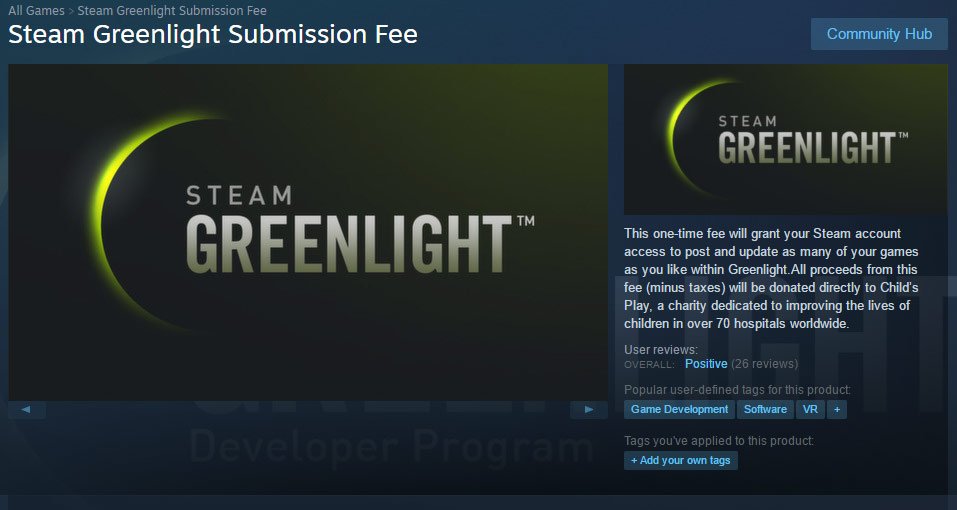What Valve's move to kill Steam Greenlight really means
Valve has finally come out of its company cave and announced the death of Steam Greenlight. Steam Direct will take its place, but will the move solve all the issues for consumers? Valve apparently thinks so.


It's no secret that the Steam store is currently a mess. It's not only difficult to find decent titles and try them, but Steam Greenlight — originally designed to bring developers and the community of gamers closer together for a stronger indie scene — has done nothing but deliver thousands of games that aren't high quality. Thankfully, Valve has finally come to its senses and is killing off the program. Steam Direct will take its place.
For those of you unfamiliar with the program, here's how Steam Greenlight works. Developers release their games to Steam Greenlight. Registered users then submit votes, and when a certain threshold of votes is reached the game is published to the store. It sounds like a solid system, but unfortunately, due to blackhat techniques, the number of titles released to the store through the program skyrocketed, and there was little in terms of moderation on Valve's part.
A huge surge in sub-par titles and cash-grab content matched with little to no vetting meant that consumers were bombarded by new games at an unprecedented level. In fact, 38 percent of Steam games available in the store were released in 2016 alone. That's a telling statistic when you're trying to figure out why it's becoming increasingly difficult to locate new gems to purchase, download and enjoy.
Steam Greenlight is a solid concept poorly executed.
And by bad games, we're not talking about taste here. There are hundreds of what are known as "asset flips" — which take free or paid assets within a game engine and make no effort to create new content for the title — as well as bug-ridden and unplayable games. This is not what Steam Greenlight was originally designed for, nor is it what you wish to see when looking for a new game.
A few years ago, the company attempted to address the aforementioned problems with the launch of Steam Curators, but this did little to fix things. Now we're in 2017, and the next preventative measure is to replace Greenlight altogether with Steam Direct.
Going 'Direct'

Valve's plan with Direct is to require developers to pay a recoupable fee, which along with other new features is hoped to address the overall issue. Said fee has yet to be decided upon, but it could be between $100 and $5,000. Valve is still in communications with various developers and studios to work out an appropriate price. (I believe it should be between $250 and $750, and nowhere near $5,000.)
We will ask new developers to complete a set of digital paperwork, personal or company verification, and tax documents similar to the process of applying for a bank account. Once set up, developers will pay a recoupable application fee for each new title they wish to distribute, which is intended to decrease the noise in the submission pipeline.
This sounds good. I like more culpability on the side of the developer, as well as the initial monetary investment that should put off those who simply wish to release a bland asset-flip clone that doesn't deserve to be on the same page as another game with hundreds of development hours. It could work. I say it could work, because there are still a few things for Valve to work out, including the fee and how developers will be able to recuperate it.
All the latest news, reviews, and guides for Windows and Xbox diehards.
Do you trust Valve with moderating submissions?
Also, just how many consumers on the Steam platform are confident in Valve's ability to adequately test and inspect each submission to ensure it works as is advertised and that there is actual game content? I'm not, and I'll remain skeptical until I can be otherwise convinced by the company. By the sound of things, Valve's checks won't be in-depth, which could allow for crap to get through. I mean, the many Unturned clones (here's one) technically run just fine. Still, it's a start.
What I'd like to see in Steam Direct

First of all, moderation. Not software-based algorithms, but actual humans going through each submission. With Valve effectively thinning out the number of submitted games on its platform, it would mark an opportunity for the company to form a dedicated testing group that follows a set of guidelines. These could include:
- Does the game work?
- Are the description and other materials reflective of content?
- Has the developer made an effort with development (not a mere clone or asset-flip)?
- Does it break the Steam terms of service?
That could help further stem the flow of submissions that eventually make it to the storefront. Valve has the capital to set up and fund such a squad of curators, so it comes down to a question of whether or not the corporation wishes to spend some cash.
All I know is killing Steam Greenlight is both a blessing and a curse. It's good to see Valve finally taking action, but it's a shame it has come to such extreme measures. For indie game developers, this should be the start of an easier journey to get your games noticed on Steam.
The ball's in your court, Valve, and the community is watching. Let's finally get this right and sort out the mess that is the Steam store. Killing Steam Greenlight could fix everything — or it could make things worse.

Rich Edmonds was formerly a Senior Editor of PC hardware at Windows Central, covering everything related to PC components and NAS. He's been involved in technology for more than a decade and knows a thing or two about the magic inside a PC chassis. You can follow him on Twitter at @RichEdmonds.
